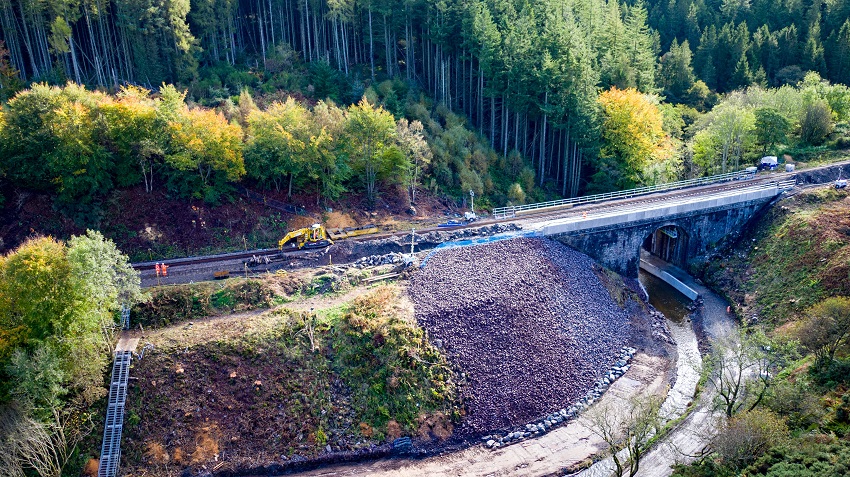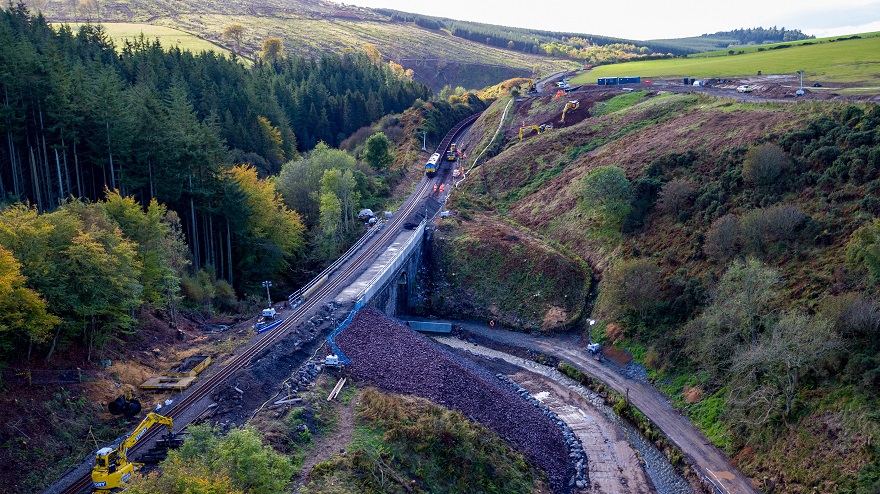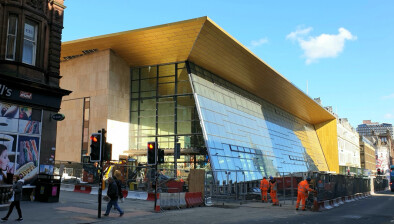Track repairs under way at Stonehaven derailment site
The latest stage in extensive recovery and reinstatement works following the Stonehaven train derailment has now begun.

Network Rail engineers are now relaying over 500 metres of track following the recent completion of work to repair the bridge and embankment damaged in the accident.
Work will continue into November as engineers remove and replace the damaged track and relay 400 metres of telecoms cables.
Teams have worked day and night over the past few weeks to complete repairs to 70 metres of bridge parapets and remove the crane pad built over the Carron Water for the recovery of the carriages in September.
A considerable amount of engineering work is also being carried out to repair and extend drainage systems on the railway track and lineside embankments at the site.
The 06:38 ScotRail Aberdeen to Glasgow Queen Street service derailed on August 12 after striking a landslip with the devastating loss of three lives - driver Brett McCullough, conductor Donald Dinnie and passenger Christopher Stuchbury.
Alex Hynes, managing director of Scotland’s Railway, said: “This is a very complex and challenging recovery and repair operation and it will take time for our engineers to fully restore the track and other infrastructure.
“While we will reopen the line for customers as soon as possible, our focus throughout the recovery process has been on making sure we do all we can to learn from this terrible accident and try to prevent similar incidents happening in the future.”

After the incident, Network Rail introduced a range of additional safety measures. As an immediate precaution, hundreds of sites nationwide with higher-risk trackside slopes, similar to Stonehaven, were inspected.
These inspections were carried out by both in-house engineers and specialist contractors, supplemented by helicopter surveys.
Network Rail has also launched two taskforces, led by independent experts, as part of its long-term response to climate change and the challenge of maintaining its massive portfolio of earthworks (embankments and cuttings), many of which date from the Victorian era.
Dame Julia Slingo FRS, former chief scientist at the Met Office and a world-renowned expert in climatology, is leading a weather action taskforce with the objective of better equipping Network Rail to understand the risk of rainfall to its infrastructure, drawing on the latest scientific developments in monitoring, real-time observations and weather forecasting.
Lord Robert Mair CBE FREng FRS is spearheading an earthworks management taskforce to see how Network Rail can improve the management of its earthworks portfolio, looking at past incidents, latest technologies and innovations and best practice from across the globe.
Network Rail already invests heavily in earthworks and drainage, and spending has increased significantly in recent years from £550m between 2009 and 2014 to a budget of £1.3bn for the period between 2019 and 2024.

















